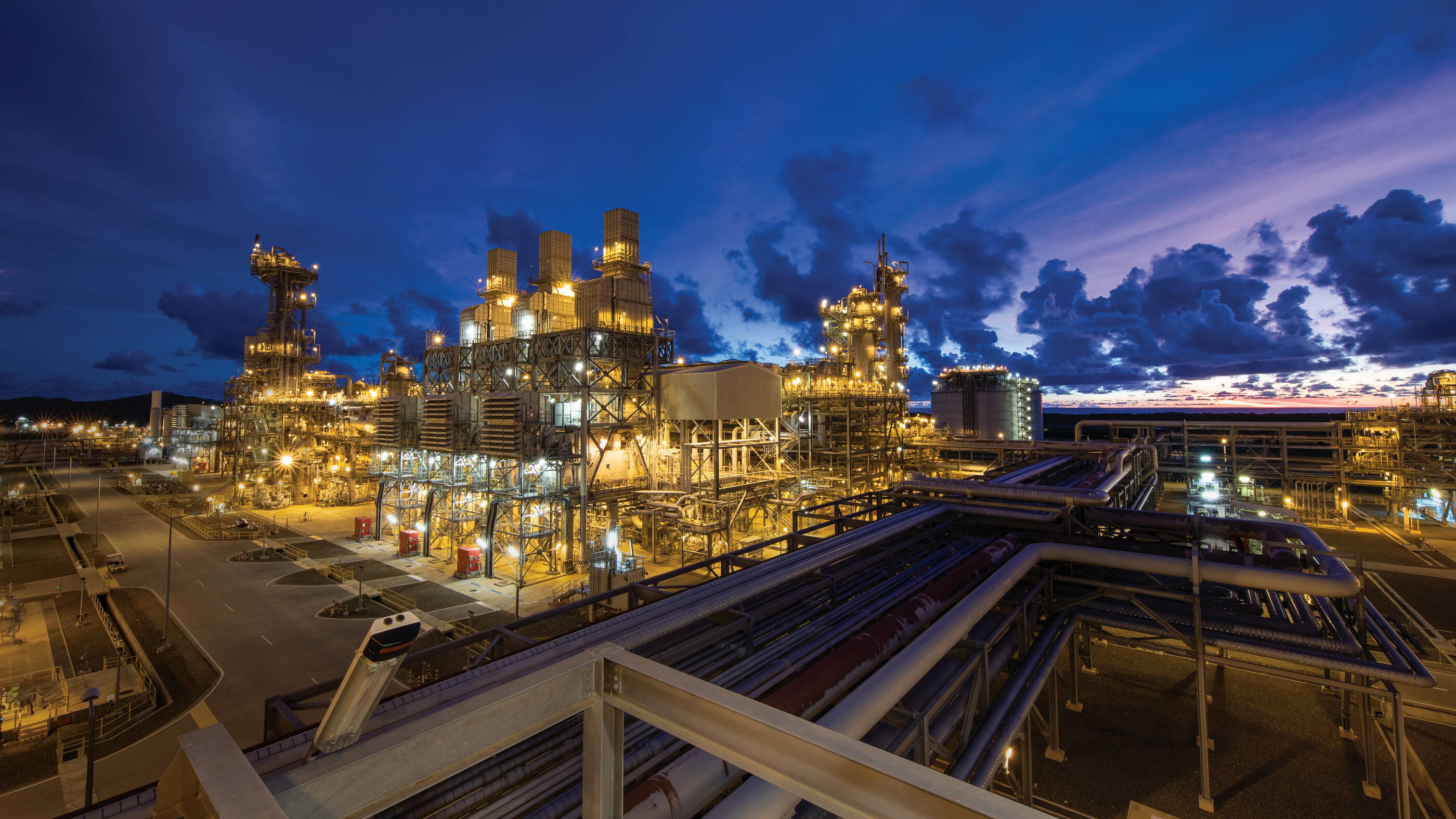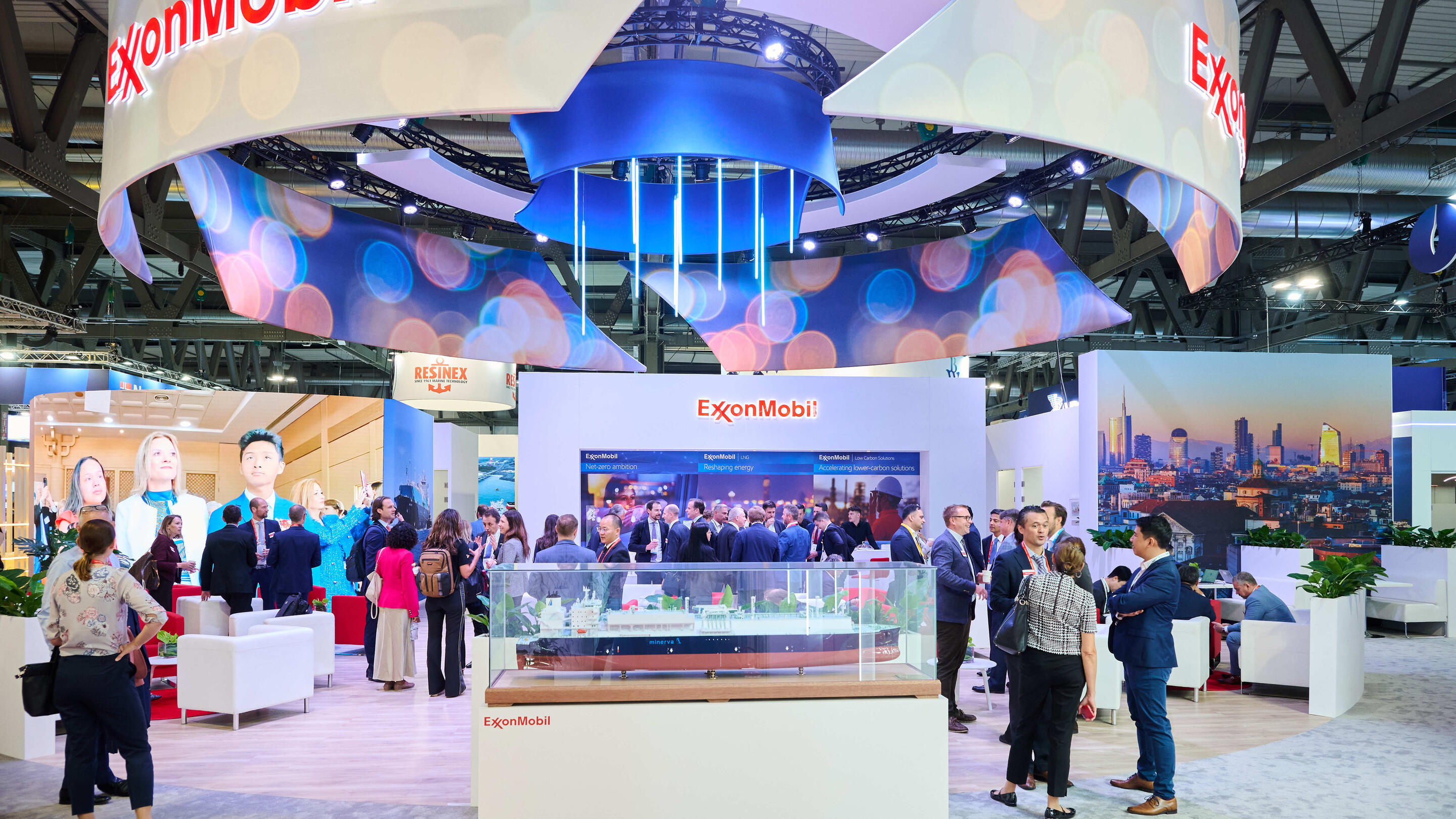Liquefied Natural Gas: Understanding one of the world's most vital energy resources
In this article

ExxonMobil has been a leader in the natural gas sector for over 40 years, and we’re committed to deepening our investment in this vital energy resource to help safeguard the environment for future generations. Liquefied natural gas (LNG) is a key part of this process, and our work in all aspects of the LNG value chain—from production, liquefaction, shipping, regasification and sales—has set industry benchmarks and fueled infrastructure and economic growth worldwide.
LNG overview: its origins, applications, and fast-growing potential
Liquefied Natural Gas – or “LNG” – is natural gas in liquid form. Natural gas is a naturally occurring hydrocarbon gas mixture consisting primarily of methane. It is colorless and odorless in its natural state and is the cleanest burning fossil fuel.
Every day, in homes around the world, natural gas provides energy for cooking and heating, and it fuels power stations that provide electricity to towns and businesses. When used for power generation, natural gas emits up to 60% less CO2 than coal, and by 2040, about 30 percent of the world’s electricity will be generated by natural gas.
Commercially, natural gas is emerging as a fuel of choice for industrial and process heating. It offers a more efficient, cleaner burning alternative to coal for powering boilers, furnaces and kilns around the world. Steel, ceramic and other energy intensive industries such as paper and pulp, aluminum, textile and cement are increasingly adopting natural gas to serve their fuel needs.
In addition to fuel, natural gas also serves as an important feedstock for making petrochemicals and fertilizers such as urea. ExxonMobil is working closely with local partners to ensure reliable and affordable access to natural gas for these industries.
Global use of natural gas is on the rise, in part because when chilled and liquefied into LNG it can be shipped worldwide. LNG is expected to meet one-third of global natural gas demand by 2040. As the global economy expands, the demand for lower-emissions fuel sources will become even more urgent. Natural gas is poised to become one of the most important sources of energy in the near future.
How LNG is produced
To create LNG, natural gas is cooled to a liquid state which shrinks its volume dramatically and allows it to be transported easily. After reaching its destination, LNG is typically warmed and regasified before use, and it can also be used as an alternative fuel in heavy duty vehicles.
Creating LNG from natural gas is a multi-step process. The first step separates the water and other liquids. The gas then travels through a solvent that absorbs CO2 and hydrogen sulfide, which would otherwise freeze in the cooling process.
Next, lighter natural gas liquids (NGLs), like propane and butane, are extracted. Finally, the purified natural gas, consisting primarily of methane and ethane, is ready to be cooled and liquefied. This is accomplished in large heat exchangers, which absorb the heat from the gas and chill it down to a temperature of minus 260°F (-162°C). After it's liquefied, natural gas becomes colorless, odorless, non-toxic and incredibly stable to transport.
Delivering LNG safely and efficiently around the world
One of the major benefits of LNG is the ease with which it can be transported, allowing fuel to be delivered to areas of the world that have previously been unreachable via transport methods such as pipelines. While awaiting transport, LNG is stored at subzero temperatures in insulated tanks before being loaded onto specialized ships.
Since the cooling process dramatically shrinks its volume, LNG takes up only 1/600 the space of natural gas. Because of this, LNG delivery ships can maximize the energy transported with each trip by packing more into every journey. In addition, over the past decade ExxonMobil joined forces with industry partners to help build some of the world’s largest and most efficient LNG tankers. The ships consume 40 percent less energy per unit of cargo than traditional LNG ships, yet carry 80 percent more cargo.
After the ships reach their destination, LNG undergoes the process of regasification, where it is heated and returned to its original state, natural gas, after which it can travel by pipeline to towns, power plants, industrial sites/plants and homes. LNG regasification can occur in a variety of terminals, including onshore and offshore floating terminals.
Case study
How ExxonMobil’s LNG infrastructure powers local economies
Economic growth in large parts of the world means increased energy use, and more and more of that energy will come from natural gas in the coming decades. ExxonMobil has partnered with governments worldwide to create new LNG facilities, infrastructure, jobs and growth for regions across Asia and Africa.
One of ExxonMobil’s largest operated LNG facilities is located in Papua New Guinea, where the PNG LNG project is transforming the energy landscape in Asia. PNG LNG, which began exporting LNG in 2014, supported a workforce of 3,900 in 2019, 86% of whom are local Papua New Guineans. The facility is considered among the best in its class for reliability, and it recently reached production levels that far exceeded original design capacity.
Over the past several years, ExxonMobil has worked on various initiatives focused on improving the local health outcomes. The support includes a $4.3M grant to further develop local health system, capabilities through a partnership with Texas Children’s Hospital to provide mentoring and capacity building to PNG’s healthcare workers. It also assisted with the construction of a medical equipment sterilizing facility, the purchase of new medical supplies and ambulances, and recently provided aid in connection with COVID-19.
Looking ahead
The potential of LNG is unparalleled, and at ExxonMobil, we’re proud to be an industry leader across all components of the LNG value chain. Over the coming decades, ExxonMobil and its partners will be there to meet the world’s growing need for this low-emissions, safe and reliable energy source.
Visit exxonmobilLNG.com to learn more about our LNG operations and business around the world.
Subscribe to the ExxonMobil LNG newsletter.
Related content

LNG: Powering progress today and tomorrow
- LNG is key to meeting rising global energy demand. As the world grows and prospers, we project natural gas demand to rise 20% by 2050.
- LNG strengthens energy security and reduces emissions, offering a reliable, lower-emission alternative to coal while complementing renewables and helping to insulate markets from geopolitical shocks.
- ExxonMobil is scaling up to meet future demand. We’ve got four major LNG projects in progress. By 2030, we expect to double our global LNG supply portfolio compared to 2020.
- We project LNG demand to rise by 3% annually through 2050, helping offset limited supply growth in parts of the market.
3 min read
• Sept. 19, 2025
Let's talk LNG
- Liquified natural gas plays a crucial role in meeting energy demand and reducing emissions.
- ExxonMobil’s LNG portfolio is on track to double by 2030 to continue to meet global needs.
3 min read
• Dec. 9, 2024
